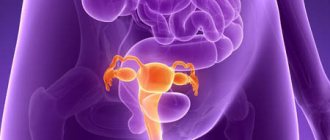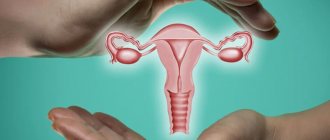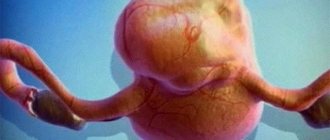If a tumor is detected in the mammary gland, a woman has a question: what is it and what to do? Advice: do not hesitate, but consult a doctor as soon as possible. The rule says that all neoplasms of the mammary gland in women, everything that she considers to be inconsistent with the normal state of her breasts, must be examined.
The good news is that more than 80 percent of breast lumps found are benign tumors or cysts that are not life-threatening.
According to the American Cancer Society, abnormal changes can be detected in one in ten women when breast tissue is examined under a microscope. Although these tissue abnormalities are not life-threatening, they can cause pain and discomfort in some patients.
The presence of some of them indicates an increased risk of developing breast cancer. The most common benign changes in breast tissue (which are not cancer) include fibrocystic pathology, benign breast tumors, and inflammatory processes. Each of these pathologies requires its own therapeutic approach.
This article is devoted only to benign neoplasms of the mammary gland, or rather, benign neoplasia, since, for example, a cyst is called a tumor, but in the classical sense it is not one. The term “neoplasia” refers to the situation of local proliferation of tissue of any organ (“plus tissue”). Neoplasia can be benign or malignant. For example, malignant neoplasia of the breast is breast cancer.
This article describes the symptoms of benign breast tumors. The reader can also learn about their causes and potential for developing into cancer, how they are diagnosed, and what treatment tactics exist for this pathology.
Benign breast tumors: what are they?
Benign neoplasms are also called dysplasia. This term refers to the proliferation of epithelial or connective tissue in the mammary glands. The pathology is accompanied by the appearance of cysts, nodules, and seals, but not always.
Breast dysplasia is not cancer or even a precancerous condition, although in 30–33% benign formations can degenerate into malignant ones. But this more often occurs in patients who do not follow doctors’ recommendations and refuse treatment.
What are the differences between tumors?
Benign and malignant tumors have significant differences both in the development process and in the consequences. Benign, as a rule, develops very slowly, it does not grow into neighboring organs and tissues, and does not spread through the lymphatic and blood systems. A malignant tumor of the mammary gland (in women) behaves more aggressively; it is able to penetrate into neighboring tissues and organs and thereby destroy them. Cancer grows and metastasizes very quickly.
The reason for the formation of a tumor is the excessive growth of cells, which, having changed their qualities and previous shape, continue to actively divide. Even after the disappearance of the factors that provoked such excessive activity, continuous cell division continues. A malignant tumor consists of degenerated epithelial cells. It spreads and sends metastases not only to nearby organs and tissues, but also to distant ones.
Every woman can detect a breast tumor independently and in a timely manner. A thorough examination and palpation makes it possible to identify any pathological changes in the breast tissue. A benign tumor is much more treatable. However, there is a huge risk of transformation of benign neoplasms into malignant ones.
Main causes of dysplasia
Hormonal changes in the female body can trigger the degeneration of connective or epithelial tissue. It has been proven that in women with diseases of the uterus and appendages, mastopathy develops 1.5–2 times more often than in healthy patients. But this is not the only reason.
Girls who have:
- have close relatives with mastopathy or breast cancer;
- there was an early termination of pregnancy;
- the first pregnancy occurred after 30 years;
- type 2 diabetes and obesity;
- inflammatory processes in the mammary glands or ovaries;
- infertility caused by endocrine diseases.
Benign formations are also more often encountered by women who breastfed for less than a month and more than 1 year, were regularly exposed to stress and took oral contraceptives for more than 10 years.
Patients over 35 years old should monitor their breast condition. And also for women with late menopause, occurring after 54 years, and girls with early menarche. Menstruation that begins before the age of 12 is considered early.
Types of breast malignancies
In 20% of cases, a noticeable lump in a woman’s bust is a malignant neoplasm of the mammary gland. Such breast cancer, in addition to the forms common to all organs (inflammatory, colloid, metaplastic, Paget, etc.), has two specific histological varieties.
Carcinoma
It arises from mutated epithelial cells lining the milk ducts or constituting the lobes of the gland. It can be non-invasive or invasive. The non-invasive type of lump is localized in the area of its origin, without affecting the surrounding tissue, and therefore can be easily treated (subject to timely detection and qualified measures). Invasive or infiltrating carcinoma is no longer an isolated phenomenon, but an aggressive disease that quickly subjugates more and more cells of the mammary gland and related tissues. Treatment of such oncology is a long and labor-intensive process.
The infiltrating type can be divided into two subtypes of ductal carcinoma:
- Pre-invasive. The disease can still be detected only within the ducts of the gland, but is already ready to begin spreading, turning into an infiltrative form.
- Infiltrative. Breast cancer that has already affected the milk ducts and reached the peri-thoracic fatty tissue. Tumor cells enter the lymphatic and blood vessels and are transported through the fluid flow to the rest of the body.
We also recommend viewing: Life expectancy for stage 2 breast cancer
Sarcoma
This breast cancer does not affect the tissue of the mammary gland lobes or the epithelium; it consists of degenerated cells of the connective tissue (stroma) - usually fibrous bridges between the segments of the gland. It is characterized by increased malignancy, a rapid rate of development and a very high percentage of relapse - sometimes symptoms of the return of sarcoma are observed for several months after treatment. The type of breast sarcoma depends on the type of stromal cells from which it was formed. In addition to fibrosarcomas, there are liposarcomas (altered fat cells), rhabdomyosarcomas (mutated striated muscle cells) and a number of others.
Mastopathy
Mastopathy includes dishormonal breast pathologies, which are characterized by the proliferation of connective or adipose tissue. The disease has diffuse and nodular forms. In the first type, small or large cysts form in the connective tissue. And in the second case, capsules with liquid contents turn into solid compactions that can develop into cancer.
Mastopathy is accompanied by local chest pain, depression, cancer phobia and inflammation of the lymph nodes in the armpits. Less commonly, brown or cloudy discharge from the nipples appears.
Diagnosis of a leaf-shaped tumor on the mammary gland
During palpation, a leaf-shaped tumor on the mammary gland is identified as a compaction, which is clearly demarcated from nearby tissues. The seal has a lobed structure, which includes several interconnected nodes.
When performing an ultrasound of the female mammary glands, specialists identify a hypoechoic formation, which in its cross-section resembles something like a head of cabbage. It has a heterogeneous structure, as well as many anechoic (fluid) cracks and cavities. Doppler ultrasound inside the formation of nodes on the mammary gland helps to identify a multiple chain of diverse arteries and veins. Mammography, in turn, helps to identify a tumor conglomerate of oval (regular) or round (irregular) shape with a lobular structure and clear outlines. A remarkable fact here is that the tumor shadow is a homogeneous and rather intense body.
The importance of preoperative differentiation in relation to a benign leaf-shaped tumor of the female breast, as well as sarcoma, necessitates a cytological assessment of the formation. This goal explains the conduct of a puncture biopsy of the tumor from its various areas, followed by a cytological examination of the biopsy.
Cyst
If mastopathy is characterized by multiple nodules and compactions, then the diagnosis of “cyst” is given to patients with a single formation. The cyst looks like an oval or round capsule filled with liquid contents. This may be lymph fluid, oily secretions, or milk.
Cysts form in connective tissues and sometimes block the milk ducts. The capsules have thin and smooth walls, and their size varies from a few millimeters to several centimeters.
Cysts rarely develop into cancer. Only formations that are constantly inflamed, recur, or do not resolve over several months are dangerous.
Mastopathy spreads to both mammary glands. The cyst often appears only in the left or right breast. The formation causes swelling, pain, and sometimes fever. Capsules can dissolve on their own without medication or surgery.
Diagnosis of pathology
Methods for diagnosing mammary neoplasia are varied and quite accurate. They include a survey, examination, blood tests and hardware methods for studying suspicious areas of the mammary glands.
The main methods for studying bust tissue are:
- Ultrasound Dopplerography (Doppler ultrasound) of the chest vessels.
- Ultrasound of the mammary glands.
- X-ray examinations (mammography, ductography, pneumocystography, etc.).
- Cytological studies (study of biomaterial “extracted” by trephine biopsy or aspiration method).
Be sure to do blood tests for hormone levels and the presence of tumor markers. Most often these are glycoproteins CA 15-3.
If necessary, the patient may be offered additional diagnostic methods: CT, MRI, electrical impedance mammography, scintigraphy or radiothermometry.
Fibroadenoma
Fibroadenoma is a dense capsule consisting of glandular breast tissue. It has an oval or round shape, smooth outer walls. The neoplasm looks like a ball with a diameter of up to 2–3 cm. It is mobile and, upon palpation, easily rolls between the fingers. Lime deposits are often found in fibroadenoma.
The neoplasm is unpaired; like a cyst, it appears in one mammary gland. Much less often - in two at once. Some fibroadenomas can increase in size by 2-3 times, but they almost never develop into cancer.
The exception is a leaf-shaped tumor. This type of fibroadenoma consists of several nodules. They are filled with epithelial and connective tissue and are difficult to diagnose. It is possible to determine the exact number of lobules when the tumor reaches the size of a quail or chicken egg.
The leaf-shaped type occurs in only 1–2% of women with fibroadenomas. It does not cause inflammation, pain or swelling. Leaf-shaped tumors can be distinguished from other types only by infiltrating growth. Unlike other fibroadenomas, the leaf-shaped neoplasm gradually grows into the glandular tissue of the breast.
Types of disease
A tumor in the sternum in women most often appears in the mammary gland, which most depends on the normal hormonal balance and well-being of the patient.
A neoplasm is formed on different tissues of the mammary gland, so there are several main types:
- mastopathy;
- breast cyst;
- intraductal papilloma;
- fibroadenoma;
- lipoma;
- adenoma.
- Mastopathy is the most common type of benign tumor in the breast in women, which develops when glandular and connective tissue grows in the breast. New growths in mastopathy are heterogeneous and may contain voids - cysts. Depending on the proliferation of tissue type, mastopathy is divided into types:
- fibrocystic, which involves mostly connective tissue;
- glandular;
- mixed type.
Mastopathy can have 1 focus (node) of development (single form) or several (diffuse). With mastopathy, the neoplasm tissue becomes very dense and can protrude on the skin when located superficially, so this type of benign tumor is the easiest to diagnose.
- If a cavity forms in the connective tissue of the mammary gland and fills with fluid, this indicates the development of a mammary cyst. An elastic formation of an oval or round shape has clear boundaries that can be easily palpated and determined by ultrasound. A woman may not notice small cysts in the mammary glands for a long time. If the size is maintained, they do not require treatment. Only with an increase in the size of the cavity and suppuration of the contents of the cyst can the presence of the disease be established for further treatment.
- Intraductal papilloma is characterized by the appearance of small spherical growths inside the ducts of the mammary gland. The disease is viral in nature, in which the human papillomavirus first infects the woman's nipple. Then, moving along the ducts, the papillomas penetrate deep into the tissues, affecting an increasingly larger area. Most often, such neoplasms appear in the ducts of the mammary gland near the nipple. The disease can affect 1 mammary gland. In rare cases, intraductal papilloma affects both breasts and causes the appearance of small “warts” in its depths. Such a disease does not have the potential to progress to a more severe stage and be well treated.
- Fibriadenoma is characterized by thickening and enlargement of a separate lobe of the breast. A firm, round lump appears in the upper part of the breast due to the growth of connective tissue between the large milk ducts, which is called intracanalicular, or around them (pericanalicular). In more severe manifestations, cysts with fluid may appear at the site of the tumor. Such a tumor usually grows up to 5 cm. The formation develops in the form of a single compaction or a cluster of small formations, affecting 1 or both breasts. Only large tumors (more than 7 cm) are considered dangerous, so if such a disease is detected, it is important to start treatment as soon as possible to avoid the growth of fibroadenoma into a malignant tumor.
- Lipoma belongs to a group of rare benign tumors. When the disease occurs, a solid tumor develops from the fatty tissue of the breast. Most often, a lipoma forms on breast tissue that is stretched after prolonged feeding of a child. It grows slowly and can reach a diameter of no more than 1 cm. Depending on the composition, the disease is divided into types:
- myolipoma, in which fatty tissue is mixed with mucus;
- myelolipoma consists of fatty deposits and mostly connective tissue;
- lipofibroma is characterized by a large amount of fat and a small presence of connective tissue in the tumor;
- angiolipoma is noted when a fatty formation appears with an overgrown network of blood vessels;
- fibrolipoma (adipose tissue is gradually replaced by connective tissue).
Due to its small size, lipoma is difficult to diagnose, since it causes discomfort only when inflammatory processes in the tissues begin. In the absence of proper treatment at the time of inflammation, over time, a lipoma can cause necrosis of neighboring tissues and develop into cancer.
- Adenoma develops only in the glandular tissues of the breast and belongs to epithelial tumors. A tumor in a woman’s breast appears quickly and can be easily felt. After general tests, a diagnosis of adenoma is made, which develops in various forms. Depending on the type of formation, it is divided into:
- apocrine (develops in the mammary glands in places where they are intertwined with sweat ducts from apocrine cells);
- tubular (develops in the form of elongated formations - tubes);
- lactation (develops during feeding and is associated with the production of breast milk. Most often appears in the nipple area);
- ductal, which appears only in the ducts of the mammary glands;
- pleoform (mixed form, in which the tumor formation can be characterized by signs of several types of adenoma).
Adenoma has vague symptoms, especially in the early stages. Complete recovery without surgical intervention is possible only in the initial stages of the disease, so a routine examination by a specialist plays an important role in preventing the disease.
Intraductal papilloma
Intraductal papillomas are small oval or round growths that appear on the walls of the ducts of the mammary glands. Tumors are formed from epithelial cells. Typically, growths cover the walls of large ducts located under the nipples.
The size of papillomas does not exceed 3–5 mm, so a woman cannot detect neoplasms during a breast examination at home. Tumors are indicated by green or bloody discharge from the nipples.
Some papillomas grow up to 1–2 cm. In such cases, a woman discovers a lump in the nipple on her own during a routine breast examination. The neoplasm resembles a dense and elastic pea. When the tumor contracts, pain and discharge from the nipples appear.
Intraductal papillomas can be single or paired. If there are a large number of growths, a diagnosis of papillomatosis is made. The formations can cause inflammation in the mammary glands and increase the risk of fibrocystic mastopathy. Multiple papillomas can degenerate into malignant formations.
Signs and symptoms of formations
At the initial stage, breast tumors do not manifest themselves in any way. In some cases, even mass formations of the mammary glands become a discovery during an independent breast examination or during a visit to a gynecologist. However, as the formation grows, it causes pain and other unpleasant symptoms. These include burning, itching and heaviness in the breast area. Depending on the type and size of the formation, painful sensations may be constant or periodic. As a rule, painful sensations intensify in the second half of the menstrual cycle and disappear almost completely at the beginning of menstruation. In rare cases, chest pain is permanent. In this case, unpleasant sensations can occur not only in the tissues of the mammary gland, but also in the back, arm, armpit, and nipple.
If we are talking about a large tumor, then the signs also include a visual difference between healthy and diseased breasts. During palpation, you can replace a formation that has an elastic or dense consistency. Moreover, it can be smooth or uneven, mobile or immobile, painful or not. Regardless of the size, pain or other parameters of the found formation, you should immediately contact a specialist.
Another sign is skin changes on the breast. However, their association with a neoplasm is rare and may indicate a malignant process. Signs also include possible nipple discharge. They can occur only when pressure is applied to the mammary gland or spontaneously. Breast discharge may be clear, greenish, whitish, or purulent.
Lipoma
Lipoma is a benign tumor that forms from the fatty tissue of the mammary glands. The size of the nodules varies from 5 mm to 2 cm. The new growths feel dense to the touch, but elastic, like a rubber ball.
The adipose tissue is surrounded by a thin capsule, so the surface of the nodules is smooth and the edges are clear. The exception is diffuse lipoma. It does not have a capsule, so the formation smoothly passes into the adipose tissue of the mammary glands.
Pathology appears in women in old age, less often in 30–40 years. Lipoma causes swelling and deformation of the mammary glands, discomfort in the chest and a feeling of fullness. A benign formation does not degenerate into a malignant one, but sometimes oncology is disguised as a wen, so doctors recommend that all patients with lipomas undergo a comprehensive examination.
Forecast
Survival with breast cancer depends on the prevalence of cancer cells. In medical circles, the term “five-year survival rate” is used, which has its own prognosis for each stage of cancer.
Patients with the first stage have the highest chances of curing the disease and complete destruction of the tumor. The five-year survival rate in such patients is up to 95%. In patients with the second stage – up to 80%, in patients with the third – up to 40%. The fourth stage of cancer leaves up to 10% of patients with a chance of survival. Moreover, statistics show that more than half of patients are diagnosed with cancer at stages 3–4.
Timely treatment of a benign tumor is the key to a favorable prognosis. Complex therapy can improve the patient’s quality of life and eliminate unpleasant symptoms. Benign tumors rarely recur after surgery (with the exception of leaf-shaped tumors).
Signs of benign tumors
Each type of dysplasia has its own characteristic symptoms. But doctors identify common signs that help women diagnose benign tumors in the early stages. Common symptoms include:
- chest pain during menstruation;
- nipple discharge;
- swelling and discomfort in the mammary glands;
- change in color of areolas and breast skin;
- any lumps in the mammary glands;
- inflammation of the lymph nodes in the armpits.
Not all benign tumors cause pain or pressure. Some pathologies are asymptomatic, so women are recommended to conduct self-diagnosis monthly or at least once every 2-3 months.
Stages and degrees
A tumor in the sternum in women, each type of which has different degrees of development and course of the disease, is distinguished into early and late stages.
- At an early stage of mastopathy development:
- A woman's lymph nodes in her armpits swell.
- shapeless formations gradually appear in the chest, which slowly increase;
- The mammary glands become harder and denser.
At a late stage:
- pain appears in the chest, which can radiate to the shoulder blade or shoulder. The pain stops for a few days after the menstrual cycle, and then appears again;
- Clear or bloody discharge begins to come out of the nipple.
- General discomfort appears in the sternum.
- When a cyst appears and develops at stage 1 of the disease, a woman does not experience any symptoms. A woman can live her entire life with small cysts in the mammary gland. But if the size of individual voids increases, the disease immediately causes a number of symptoms.
At a late stage of the disease:
- in the presence of suppuration of cystic fluid, a woman may develop and maintain a high temperature;
- a constant nagging pain occurs in the chest at the site of formation, which is practically not drowned out by painkillers.
If left untreated, a cyst in the sternum can burst, causing damage to all tissues and infection of the body.
- Intraductal papilloma in the initial stage does not have clearly defined symptoms.
Even during the period of active development of the disease at a late stage, a characteristic sign will be:
- slight pain when squeezing the breast;
- the appearance of yellow, brown or green discharge from the nipple.
The disease does not develop into cancer, but can gradually affect the entire body.
- With fibroadenoma, the symptoms of the disease are completely absent, so the disease can be diagnosed only during a routine examination.
At stage 2 of the development of fibroadenoma, small signs appear that signal the active course of the disease:
- menstrual irregularities up to infertility;
- hormonal imbalance;
- a sharp and significant change in body weight or visual acuity.
In the event of a sudden change in health status, a routine examination by a gynecologist and mammologist is recommended in order to exclude this diagnosis.
- At the initial stage of lipoma development, there are no symptoms of the disease.
At a late stage in the female breast:
- aching pain appears;
- a compaction develops, the tissue around which can become inflamed;
- When suppuration occurs, the temperature rises and remains at a high level.
A lipoma in the later stages of development is surgically removed immediately, otherwise it can cause necrotic processes in surrounding tissues and organs.
Diagnostics
If a patient suspects she has mastopathy, she turns to a mammologist or mammologist-oncologist. The doctor examines the breast with his hands and special instruments. If lumps or other suspicious symptoms are detected, the specialist draws up a diagnostic plan.
A patient with neoplasms in the mammary glands is referred for mammography or ultrasound. Ultrasound examinations are safer and more accurate than x-rays. It allows you to determine the size, outline and location of the tumor. But mammography detects even the smallest and most invisible nodules that other devices cannot detect. If ultrasound and mammography are not enough, the woman is offered to undergo a CT or MRI of the mammary glands.
The patient is also sent for a blood test. Doctors check levels of female hormones and thyroid hormones. A blood test can also tell about the condition of the liver, the presence or absence of inflammatory processes in the body.
If the mammologist has doubts, he suggests that the woman undergo a biopsy of the tumor. The procedure allows us to determine with 100% accuracy whether a tumor is benign or malignant.
Reasons for appearance
A tumor in the sternum in women does not occur for no reason.
Common causes of occurrence that are present in all cases during examination include:
- hormonal imbalance in the body. The ovaries, adrenal glands and pituitary gland produce different amounts of hormones in the right ratio. The level of hormone production varies depending on the age of the body and reaches a maximum during the reproductive period. In some cases, the production of hormones by organs may be disrupted due to illness (pelvic disease, diabetes) or stress. With a strong and constant disturbance in the level of hormone production (increase or decrease), various diseases begin to develop in the body, including benign tumors in the mammary gland.
- hereditary predisposition, which is determined by the genome;
- diseases of the endocrine system affect hormonal balance and can cause the development of the disease;
- bad habits: smoking, alcohol, obesity, as well as poor ecology increase the likelihood of developing tumors in women in the breast.
- the absence of pregnancies by adulthood, the presence of several abortions or refusal to feed the child after childbirth provokes the development of lipoma and mastopathy after 35 years.
There are individual reasons that provoke the development of certain types of benign tumors.
The causes of the development of lipoma and adenoma are considered:
- severe injuries to the mammary glands, especially during their formation or during breastfeeding;
- frequent pregnancies, abortions and prolonged breastfeeding.
Mastopathy and adenoma often develop in cases of:
- radiation exposure, frequent visits to a solarium or sunbathing;
- damage to the body by toxic industrial poisons.
Intraductal papilloma is provoked by a lack of personal hygiene or indiscriminate sexual intercourse. A woman can get this disease at any age. Inflammatory processes in the chest can become an impetus for the appearance of cysts and the development of mastopathy.
Treatment of benign tumors
Surgical removal of tumors is prescribed for women with nodular mastopathy and lipoma. Tumor resection is resorted to if the cyst is filled with bloody fluid, as well as if it recurs or does not respond to conservative treatment. In other cases, doctors choose a medicinal method to combat mammary dysplasia.
There is no single treatment regimen. The mammologist selects medications depending on the type of tumor, the patient’s age and her state of health. A woman with a benign neoplasm may be prescribed:
- Sedatives. Stressful situations disrupt a woman’s hormonal levels and increase the risk of mammary dysplasia, so doctors recommend taking sedatives. They improve the functioning of the nervous system and help with the diffuse form of mastopathy.
- Diuretics. Both synthetic and herbal products remove excess fluid from the patient’s body, relieve swelling and reduce discomfort in the mammary glands.
- Progestogens are drugs containing progesterone. Mammologists believe that a lack of this hormone is one of the main causes of hormonal imbalances and benign tumors. It is best to use ointments and gels with progesterone. The products work locally and do not reach other internal organs.
- Vitamins A, E, B, PP and C. Vitamin complexes are prescribed together with hormonal medications. They improve blood circulation in the mammary glands, relieve swelling, relieve pain and stimulate the resorption of tumors.
- Estrogen receptor modulators. These hormonal agents increase the concentration of estrogen, “soften” fibrous tumors and help them resolve.
Synthetic drugs can be replaced with homeopathic ones. Herbal medicine normalizes the hormonal levels of the mammary glands, improves the structure of connective and epithelial tissue, and helps with diffuse cysts, but herbal remedies work 1.5–2 times slower.
Classification of tumors
In medical practice, the histological anatomy of a benign gland tumor is usually used, which was invented by health experts. Pathological anatomy takes into account the characteristics of cell structure and the increase in neoplasia.
Breast mastopathy
This is a common name for more than 50 types of benign breast tumors. Absolutely everyone has the same characteristics. They may look similar. A benign tumor often forms in 30-50-year-old women if changes in the hormonal level are detected in their body.
Cysts in female breasts
A cyst in the breast is considered a benign neoplasm that appears as a result of hormonal failure or changes in the glandular matter of the breast that occur with age. Previous inflammatory diseases can become a formation factor.
After 36 years, the glandular matter in the gland is replaced by fatty or fibrous matter. Often the first option is likely. During menopause, changes in the level of hormones in the body are more important. If menopause occurs, the glandular matter in the breast is almost entirely replaced by fat, and the fibrous connective tissue septa are separated.
Under the influence of hormones in the ducts of the chest, the decrease in secretion is disrupted, and slow development appears in the alveoli. Because of this, they expand and special cavities appear. Inside any sac there is a glandular secretion. With changes in the alveoli, cyst-like pathologies form in the chest (single, multiple).
Signs of the disease:
- pain and swelling in the chest
- shaped changes in the breast
- skin discoloration
- violations of nipple configurations
An ordinary breast cyst will not require surgical intervention. Comprehensive education calls for urgent surgery. If the tumor is small, then therapy is carried out using classical methods. The doctor identifies substances that change the balance of hormones.
However, in a situation where the tumor in the breast is large, they create an opening, which involves pumping out fluid from the cyst, and then replacing it with a medicine that will connect its walls, and will undoubtedly help rapid healing. This type of benign tumor does not often recur. Monitoring is favorable for many, despite the fact that isolated episodes of degeneration of a breast cyst into a tumor are still recorded and can be recognized.
Fibroadenoma
It often occurs in women under the age of 35. Its characteristic features are a slow increase and separate outlines. When probed, it resembles a moving ball. The factor of its origin is often represented by various breast defects and disruptions at the hormonal level.
Fibroadenoma is a benign tumor that is widespread and sheet-like. The second type of benign tumor has a high risk of changing into a malignant neoplasm. A more precise diagnosis can be made using ultrasound or mammography. The fibroadenoma must be removed, other treatment is not taken into account.
Intraductal breast papillomas
Intraline papillomas are classified as nodular mastopathy, which can appear in different women of any age category due to differences in the hormonal system.
The signs characteristic of this variety of benign formations are often the following:
- chest discomfort and pain
- when you press on the nipples, fluid comes out of the breast, sometimes with blood
To identify intracellular papillomas, a chest x-ray should be performed. Treatment of pathologies only by a surgeon.
Lipoma
Breast lipomas are more common in women, often after 35, when hormonal changes occur. Such a benign tumor is detected from adipose tissue. Not hard to the touch, painless. The volume of breast lesions can be varied; in some patients, lipomas reach half a cm in diameter.
Lipomas do not dissolve on their own, they must be treated, therefore large benign tumors that initiate discomfort require surgical removal. It is also necessary to indicate that there is a threat of its degeneration into a malignant formation.
Tablets are not used for treatment. It is possible to perform a procedure for endoscopic removal of a benign tumor by aspiration of fat from the capsule. Laser surgery is also used. A benign tumor is not prone to recurrence. However, in the case where the elimination was made with errors and was incomplete, then a formation may be identified.
After painstaking diagnosis, treatment is carried out - removal of benign tumors of the mammary glands. A breast tumor is treated depending on its type, level of formation and condition of the patient. As a rule, the doctor recommends removing the formation. However, in certain embodiments it is absolutely possible to do this using conservative methods. It is no less important to eliminate the root cause of the benign tumor. This is necessary to avoid recurrence of the disease in the chest.
Prevention
Diet helps reduce the likelihood of benign breast disease. Women are advised to eat less meat. The product can be replaced with fish, legumes, vegetables and fermented milk drinks. Meat stimulates the production of carcinogenic compounds in the body and increases the risk of breast cancer.
It is also worth monitoring the health of your intestines and liver. If the digestive tract malfunctions, the utilization of estrogen slows down, and this leads to hormonal imbalances in the female body.
In patients with bad habits, benign tumors appear 2–3 times more often than in girls who do not drink alcohol, drugs and nicotine. Provoking factors also include excess weight and irregular sex life. Exercising, on the contrary, reduces the risk of breast cancer and benign tumors.
Every tenth woman of reproductive age faces breast dysplasia. The pathology is caused by inflammatory diseases of the reproductive system and hormonal disorders in the body, so patients are recommended to undergo an annual examination and monitor their health.
Diagnosis of cancer
Diagnosis of the disease includes examination and questioning of the patient, palpation of the mammary gland and regional lymph nodes, blood testing (biochemistry and determination of tumor markers, detailed clinical analysis, immunological study to determine the sensitivity of tumor cells and hormones), studying the tumor using hardware methods and obtaining a “morphological portrait” of the uninvited guest.
Hardware methods include ultrasound, ducto- and thermography, classical mammography and its various new modifications, microwave-RTS, radiositopic diagnostic methods. Then a biopsy sample must be taken. The type of invasive examination (minimally invasive methods or diagnostic surgery) is determined by the doctor, based on the depth of the tumor and the expected type of tumor.











